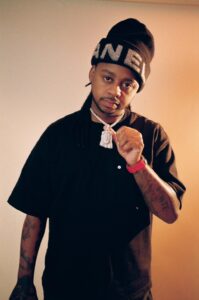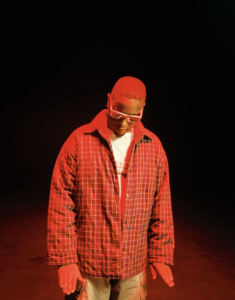Richie’s Reprisal: Thoughts from the Pallid Pilgrim
OUT-SPECTORING SPECTOR
by Rich Horton
In the days before multi-tracking, producers of rock-influenced pop records were stuck with the thorny problem of how to translate rock’s bombast over the tinny car radio speakers by which most American teenagers heard the music. Phil Spector’s solution to the problem was to invite 20 and sometimes 30 musicians and singers into the studio to create the backing track for the groups he produced.
And the results were impressive. Even though the songs were oftentimes sung by untrained teenaged singers, when backed by Spector’s Wall of Sound, the urgency of those records made them sound like the most important thing in the world. Decades later, Spector-produced records like “The Loco-Motion” by Lil’ Eva and The Righteous Brothers’ “You’ve Lost That Lovin’ Feelin’” still have visceral power. Brian Wilson often relates the story of the first time he heard The Ronettes’ “Be My Baby” while driving and had to pull over to the curb, mesmerized by the hugeness of the sound emanating from his tinny car radio speakers. Wilson describes it as a life-changing, almost religious experience.
While Brian Wilson may be one of the more well known of Spector disciples – particularly because Wilson’s own studio expertise eventually surpassed Spector’s – dozens of pop music producers followed in Spector’s footsteps. Even well into the mid-to-late Sixties – even after 4 and 8-track recording techniques had taken hold, and when George Martin and The Beatles were inventing new ways of recording – Phil Spector’s influence loomed large.
Occasionally, however, some of Phil’s disciples could out-Spector Spector.
Take this 1962 recording by The Four Seasons, for example. Frankie Valli and the Seasons may have started out as a self-contained doo-wop group, but by the time they entered the recording studio, it was clear that producer Bob Crewe – the man who produced virtually all the group’s records – had been paying attention to Phil Spector. It also may have been a time when male falsetto singers reigned supreme, but Crewe was wise enough to create his own wall of sound by recording all four singers at equal volume whenever the refrain kicked in, and as big a hit as “Big Girls Don’t Cry” was, Phil Spector could have been forgiven if he’d demanded production royalties in absentia.
In late 1963, just mere months before The Beatles invaded America, a young Quincy Jones produced an even younger Lesley Gore on “She’s A Fool,” an angry record that seemed anomalous at a time when pop was still fairly innocent. But full of reverbed hand-claps, a high-pitched female choral background, low-toned “shag-a-doo-las” from a male quartet, and a wall of saxophones and clinking piano, it’s a production masterpiece that out-Spectors Spector.
By 1966, after “Rubber Soul” had made it clear that a small band could make huge-sounding records without hiring teams of session players, many artists were eager to prove they could do it, too, often with failed results. But Lou Christie, a pop artist who’d had a couple of hits in the early Sixties, was trying to resurrect his career, and he turned to the tried-and-true producer-arranger Charles Calello (who’d worked off and on with the aforementioned Bob Crewe) to create “Lightnin’ Strikes,” a record that snarls and roars with a Wall of Sound lustful urgency.
Of course, there are many more examples of other producers out-Spectoring Spector. The one that comes quickly to mind is Sonny & Cher’s “I Got You, Babe,” which is full of Spectoresque tricks, including catchy instrumental quirks – think: lead oboe on the refrains and the ubiquitous glockenspiel that adorned so many Wall of Sound recordings. However, given that both Sonny & Cher had worked for Spector and had performed as background singers on many a Spector production, that’s not really a fair example.
Then, there’s a recent example – “Never Gonna Get Married” recorded in 1999 by The Schulte Sisters (a fake group produced by the fake producer, Clem Comstock). The song is an over-the-top homage to Spector’s girl-group recordings while out-Spectoring him. (From the CD “Where Has the Music Gone? The Lost Recordings of Clem Comstock,” 1999, Mental Giant Records)
And then there’s the opposite example – a time when Phil Spector not only failed to live up to his own mythology but let down the biggest band in the world, The Beatles, when John Lennon insisted that Spector produce the “Let It Be” album – a record that Lennon initially insisted have no overdubbing or extra backing tracks, but then ran off the rails with Spector’s misguided production work of songs like “The Long and Winding Road” and “Across the Universe.”
But it’s still fun to come up with examples of records that out-Spectored Spector, and a fun evening can be had pulling out copies of Freddie Boom-Boom Cannon’s “Palisades Park,” Skeeter Davis’ “I Can’t Stay Mad At You,” or Dusty Springfield’s “I Only Want to Be With You,” and debating whether they’re examples of records that out-Spector Spector.
– Rich Horton
Also from Rich:
Confessions of a Rock Snob: How I Repented & Invited the Beach Boys Into My Heart, by Rich Horton



